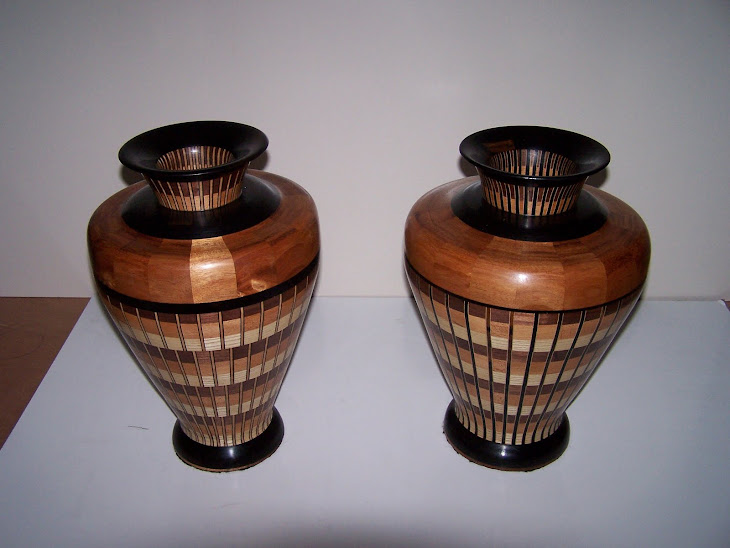Hey steve,
I hope this email finds you well. I have a question about turning. I am looking into hollow vessel turning and find I am in need of a hollowing tool. Faced with paying north of 100.00 for what amounts to a carbide bit on a shaft I really don’t know what to do. Can you give me any good feedback? How do you hollow vessels?
Matt
hey there and God bless
Great question
I use some hollowing tools and yes they are expensive but worth every sent.
As with all lathe tools the closer your tool rest to the cutting area the better and smother the cut. Vibration is the problem so try to get your tool rest into the mouth of the piece as much as possible. the more you extend the tool away from the rest, the more chance of catching , grabbing and tear out.
My suggestion ... spend the money. Hollowing tools are one place where a little more expense in tool makes all the difference.
I do mostly segmented stuff so I hollow as I go, adding rings and hollowing one ring at a time as I add it in place right on the lathe. The tail stock makes a great ring center-er so to speak and clamp. This way I never have to extend into a completed work or large wood blank. The blank grows so to speak as I add the rings. The tail stock adds pressure to the new ring from tail stock to head stock. A couple of jigs that attach to the tail stock help here with both even pressure in gluing and centering.
My tool of choice in cleaning the interior is my parting tool followed by my favorite scraper. Usually I will make larger than needed rings to harvest the balance for another use. On both the exterior of your work and the interior you can cut away the unused portion of ring using both the donuts and the donut hole so to speak.
Also I work from both ends of a piece (top and bottom on separate face plates like making 2 bowls) to the middle and the last glue up is the two middles glued together. that way you are never working on a small tight opening and extending your tools long distance.
Try that and see if things don't improve.
Steve





No comments:
Post a Comment